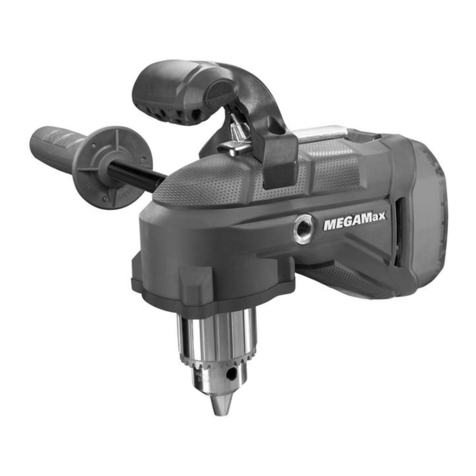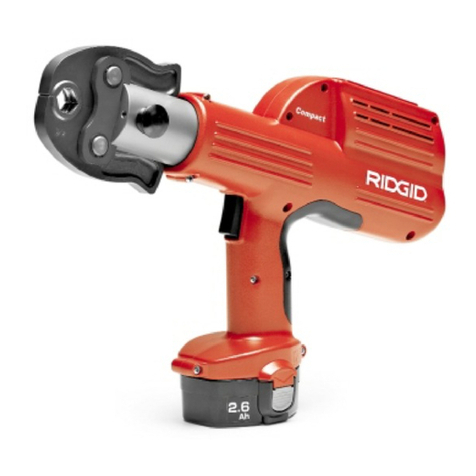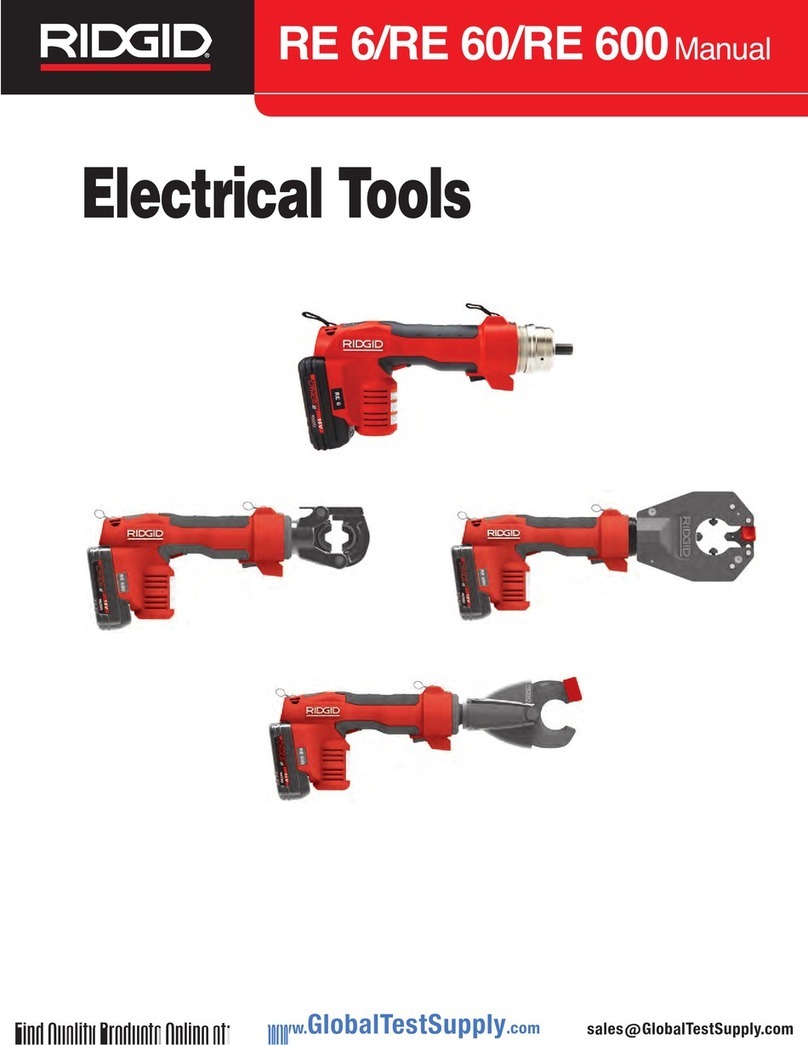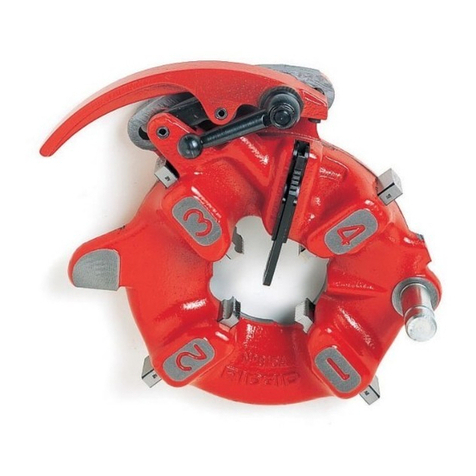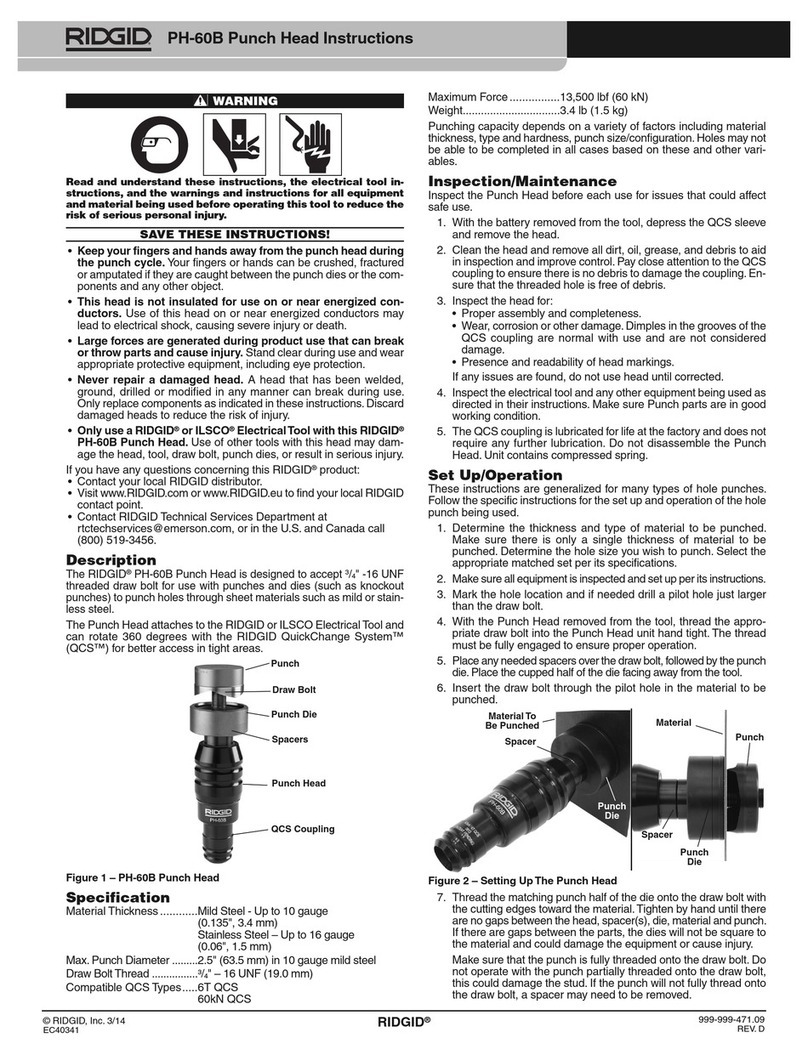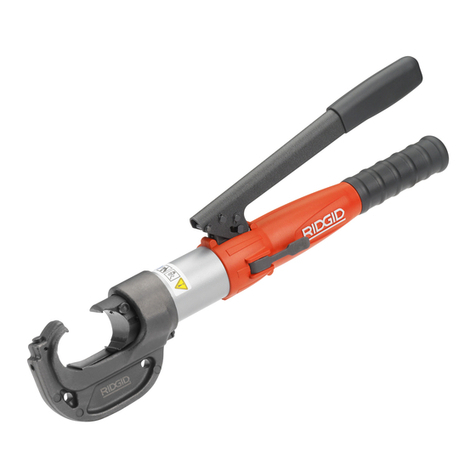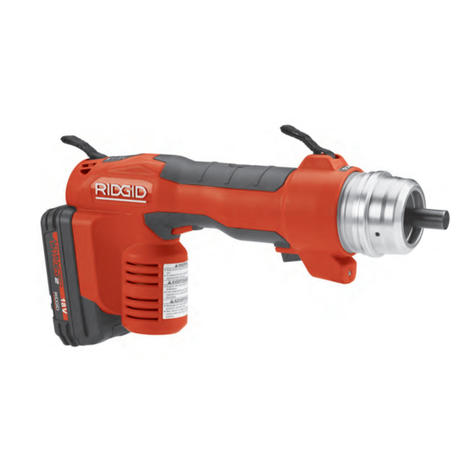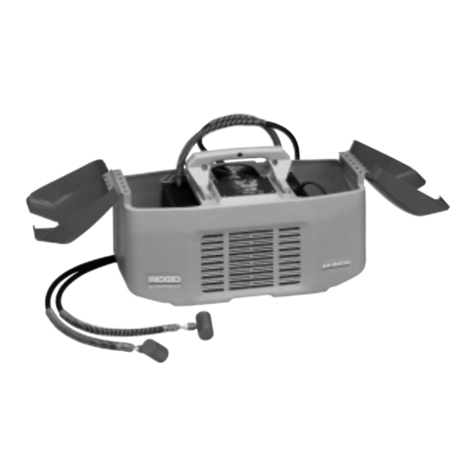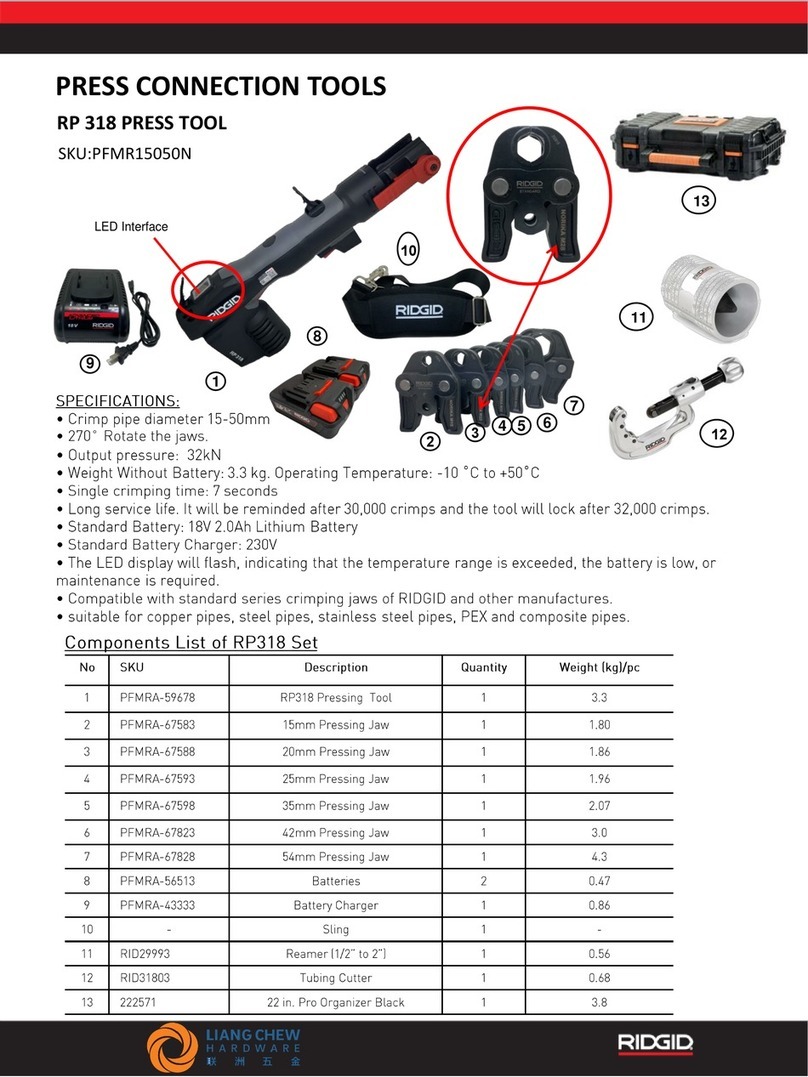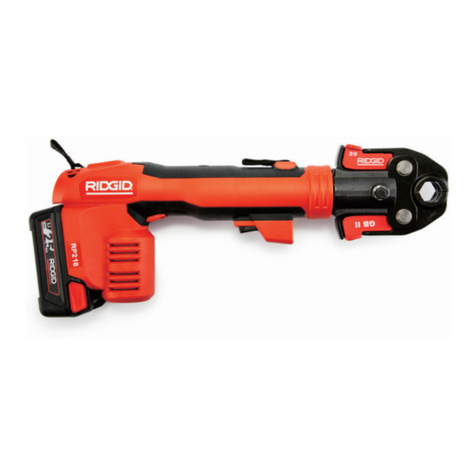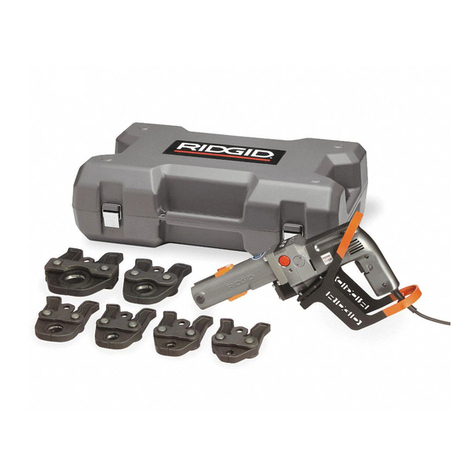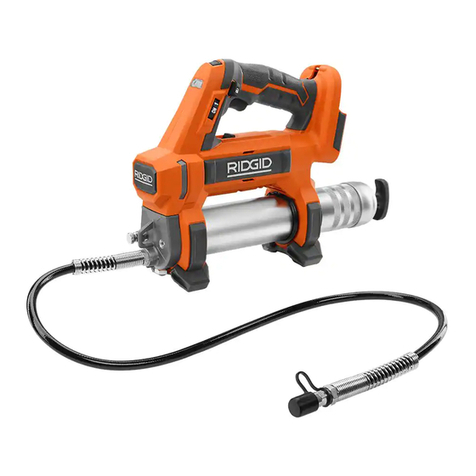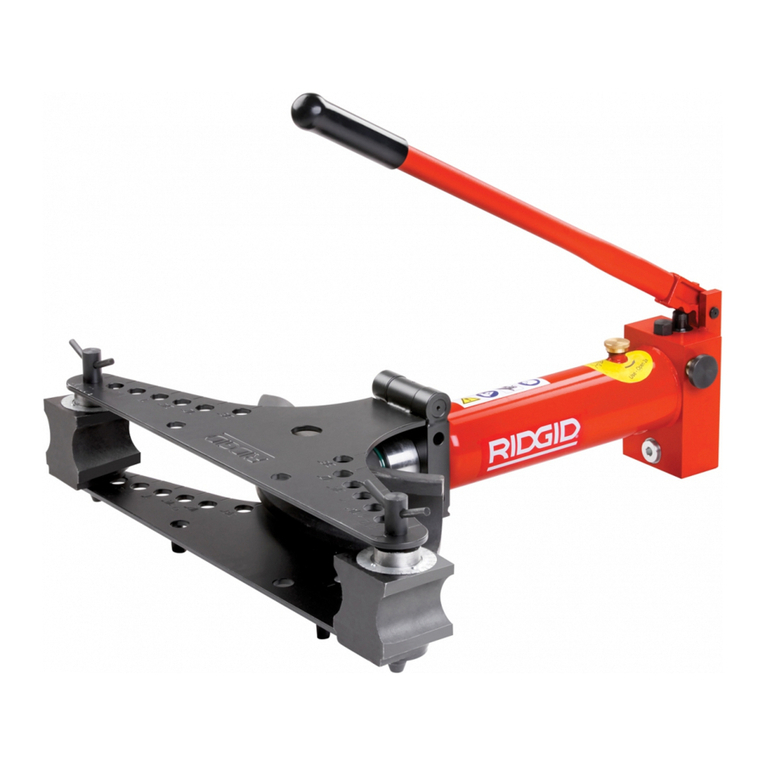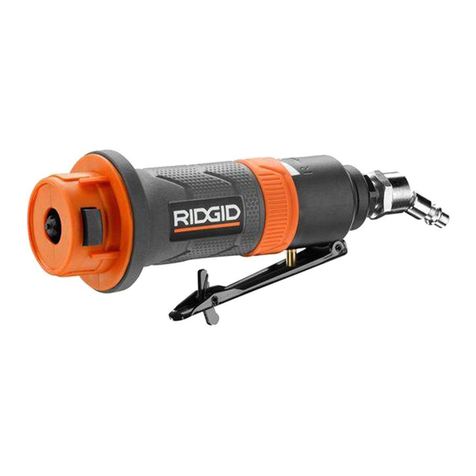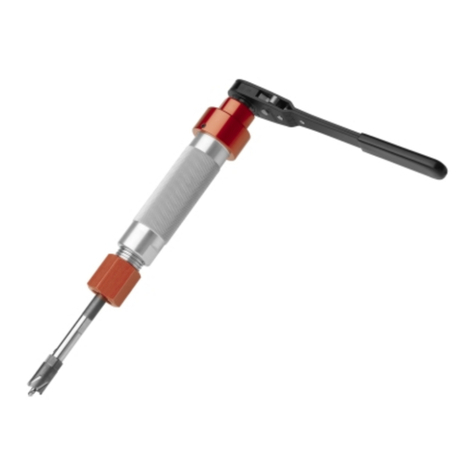
better control of the power tool in unexpect-
ed situations.
• Dress properly. Do not wear loose cloth-
ing or jewelry. Keep your hair, clothing
and gloves away from moving parts.
Loose clothes, jewelry or long hair can be
caught in moving parts.
• If devices are provided for the connec-
tion of dust extraction and collection
facilities, ensure these are connected
and properly used. Use of dust collection
can reduce dust-related hazards.
• Do not let familiarity gained from fre-
quent use of tools allow you to become
complacent and ignore tool safety prin-
ciples. A careless action can cause severe
injury within a fraction of a second.
Power Tool Use And Care
• Do not force the power tool. Use the
correct power tool for your application.
The correct power tool will do the job bet-
ter and safer at the rate for which it was
designed.
• Do not use the power tool if the switch
does not turn it ON and OFF. Any power
tool that cannot be controlled with the
switch is dangerous and must be repaired.
• Disconnect the plug from the power
source and/or remove the battery pack,
if detachable, from the power tool be-
fore making any adjustments, chang-
ing accessories, or storing power tools.
Such preventive safety measures reduce
the risk of starting the power tool acci-
dentally.
• Store idle power tools out of the reach
of children and do not allow persons
unfamiliar with the power tool or these
instructions to operate the power tool.
Power tools are dangerous in the hands of
untrained users.
• Maintain power tools and accessories.
Check for misalignment or binding of
moving parts, breakage of parts and
any other condition that may affect the
power tool’s operation. If damaged,
have the power tool repaired before
use. Many accidents are caused by poor-
ly maintained power tools.
• Keep cutting tools sharp and clean. Pro-
perly maintained cutting tools with sharp
cutting edges are less likely to bind and are
easier to control.
the power tool. Keep cord away from
heat, oil, sharp edges or moving parts.
Damaged or entangled cords increase the
risk of electric shock.
• When operating a power tool outdoors,
use an extension cord suitable for out-
door use. Use of a cord suitable for out-
door use reduces the risk of electric shock.
• If operating a power tool in a damp
location is unavoidable, use a Ground
Fault Circuit Interrupter (GFCI) protect-
ed supply. Use of a GFCI reduces the risk
of electric shock.
• If operating a power tool in a damp lo-
cation is unavoidable, use a Residual
Current Device (RCD) protected supply.
Use of a RCD reduces the risk of electric
shock.
• It is recommended that the tool always
be supplied via a Residual Current De-
vice having a residual current of 30mA
or less.
Personal Safety
• Stay alert, watch what you are doing
and use common sense when operat-
ing a power tool. Do not use a power
tool while you are tired or under the
influence of drugs, alcohol or medica-
tion. A moment of inattention while oper-
ating power tools may result in serious
personal injury.
• Use personal protective equipment. Al-
ways wear eye protection. Protective
equipment such as dust mask, non-skid
safety shoes, hard hat, or hearing protec-
tion used for appropriate conditions will
reduce personal injuries.
• Prevent unintentional starting. Ensure
the switch is in the OFF-position before
connecting to power source and/or bat-
tery pack, picking up or carrying the
tool. Carrying power tools with your finger
on the switch or energizing power tools that
have the switch ON invites accidents.
• Remove any adjusting key or wrench
before turning the power tool ON. A
wrench or a key left attached to a rotating
part of the power tool may result in person-
al injury.
• Do not overreach. Keep proper footing
and balance at all times. This enables
3
999-995-408.10_REV. A
RP 115 Press Tool

